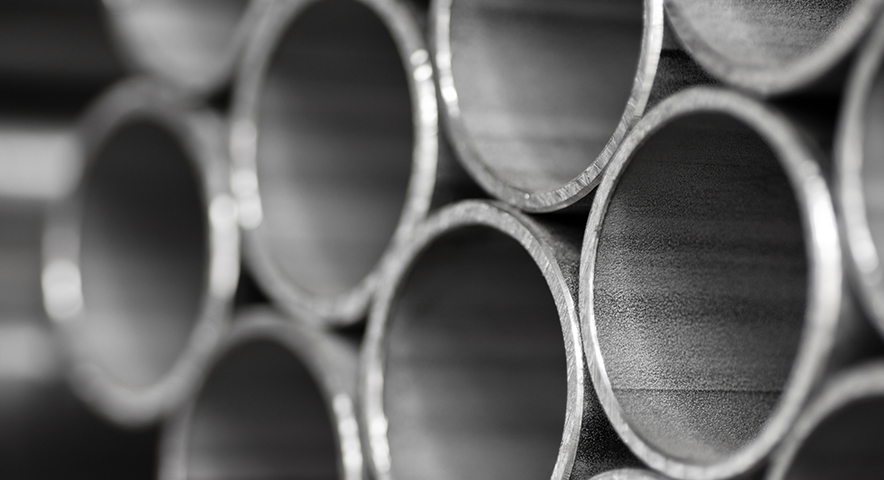Understanding stainless steel pipe for various industries

With so many various materials available, such as seamless pipes, welded pipes, and flanges, it might be difficult to decide which Stainless-steel pipe to use for your company purposes, or even what they can be used for. There are so many different qualities of each pipe that give it a unique utility in its separate sectors, and learning the different types of piping materials and what they’re used for is essential if you’re going to master the different types of piping materials and what they’re used for.
There are various types of stainless-steel pipes:
Welded Pipe:

Because of its versatility, welded pipes can be employed in almost any industry. They do, however, perform better in terms of corrosion resistance than in terms of pressure resistance. Welded pipes are significantly more feasible than most other piping technologies and provide the most value for your money due to the materials used and the lightweight nature of the pipes.
Spectacle Blinds:
Spectacle blinds, spades, and spacers are employed for regular or perpetual solutions that allow for the segregation of piping sections. Spectacle blinds are used to isolate a specific segment of the tubing in order to preserve a bigger structure when a piece of machinery or piping section needs to be serviced. Because this is such a critical role for your safety, it’s essential that you thoroughly examine the reliability of your spectacle blinds if you want to stay safe. Because each use case is unique, it’s best to consult a specialist before investing a significant amount of money on spectacle blinds.
Pipe flanges are another crucial component of your pipe system. Slip-ons, blinds, lap joints, threaded, and semis are just a few examples. To assure their dependability, these are built from strong and solid materials, and only high-quality items are selected while making pipe flanges.

Steel pipes being such a versatile material have innumerous applications in several crucial industries. Its rigorous manufacturing process allows it to withstand extreme conditions, thus making it a popular choice for engineers and industries alike.
Here are a few industries where stainless-steel is actively utilized:
Mining and mineral extraction:

The process of extracting resources from the earth is known as mining. The materials involved are usually metals, both common and precious, and it’s been done for thousands of years to obtain useful features. Stainless steel has made it easier and more economic to take on massive operations in the mining industry. It’s utilized in a variety of sectors to ensure safety and reliability, whether it’s in the actual mines where people and machinery dig at the soil, or in rooms and dining areas where workers rest.
Transporting LNG:
Liquefied natural gas (LNG) is gas that has been temporarily transformed into a liquid state for transportation purposes. Its volume has been drastically reduced to make transportation easier and less expensive. Natural gas is delivered in liquid form in cryogenic sea vessels and road tankers in some circumstances because transferring it via pipes isn’t viable or cost-effective enough. As a result, it’s critical to have the necessary piping in place to supply natural gas to remote areas of the country or the world in a safe and cost-effective manner.
Oil and Gas Industries:

In the oil and gas industries, technology is extremely crucial. Corrosion-resistant plumbing has become increasingly important in recent years as the layers to which we search for oil have expanded, putting additional pressure on the duplex and super duplex stainless steel tubes we employ. These hostile surroundings can be toxic and harmful, and if the damage is not addressed, the pipes can quickly rupture, rendering them unfit for use at deeper depths. This is why it’s critical to have durable pipelines in the oil and gas business, and how they play such a crucial role in the industry’s success.
Nuclear industries:

It’s not easy to extract useful energy from subatomic particles. All of today’s nuclear reactors boil water generate steam, which is subsequently used to rotate turbines that generate electricity, and the majority of them are located by coastal areas to manage high temperatures. Due to this, a large portion of the water used to cool nuclear reactors comes from the ocean, and it must be resistant to the corrosive nature of saltwater. Stainless steel pipes are more highly capable of resisting corrosion caused by seawater, which is why it is so important in the nuclear power business.
Maven steels have worked in almost all of these industries and have employed stainless in other sectors such as desalinization, interior décor and so on. So, we are coming from experience when we say that Stainless-steel is the material of the future.
Need steel for your upcoming venture, consult with our experts and shape your dream project with maven stainless steel!
Related Articles
Recent Posts
- Understanding stainless steel pipe for various industries
- How quality testing of steel pipes affects the final products made
- What is the difference between carbon steel and stainless-steel pipe?
- Stainless Steel for Interior Designers: How to make design more efficient using stainless steel.
- How is stainless steel manufactured in India: A guide to find the right stainless steel
Recent Comments
- mersin veteriner on Comparison Between Stainless Steel and Carbon Steel
- veterinerlik on Comparison Between Stainless Steel and Carbon Steel
- kayseri hayat veteriner on Comparison Between Stainless Steel and Carbon Steel
- Kadirli Veteriner Klinikleri on Comparison Between Stainless Steel and Carbon Steel
- eskişehirde veteriner klinikleri on Comparison Between Stainless Steel and Carbon Steel
Archives
Categories
About Our Blog
We are so happy you’re here!! Our unforgettable memories in life seem to take place so we decided to Start of Happiness had to be established.



